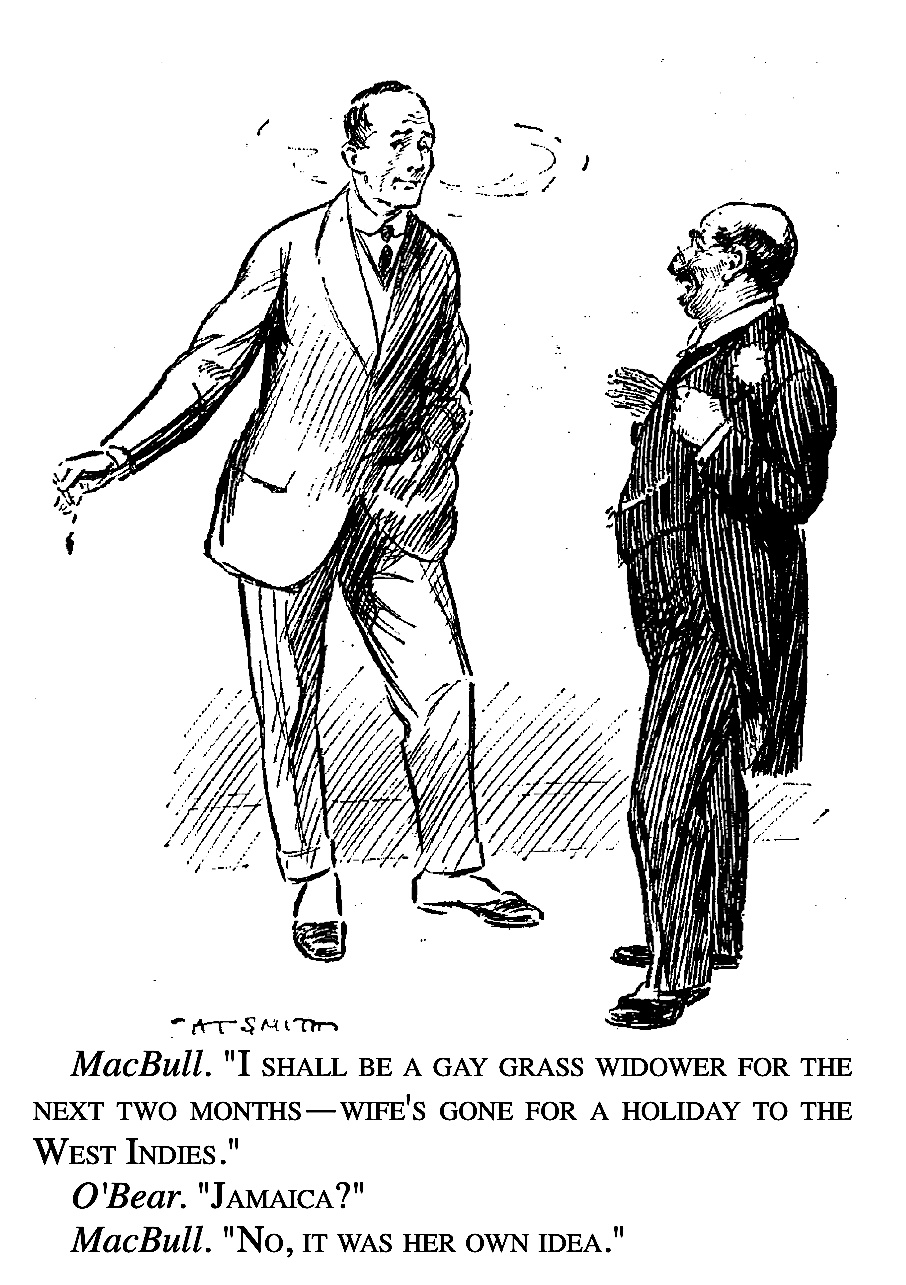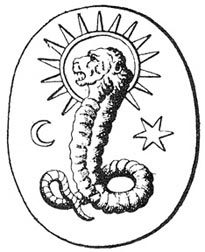|
Metalepsis
Metalepsis (from ) is a figure of speech in which a word or a phrase from figurative speech is used in a new context. Quintilian described metalepsis as an "intermediate step" to the original phrase, and its meaning depends upon its connection to the idiom from which it derives. Harold Bloom called metalepsis a "metonymy of a metonymy" because it uses part of an established trope to refer to the whole. Examples *"I've got to catch the worm tomorrow." **"The early bird catches the worm" is a common maxim, advising an early start on the day to achieve success. The subject, by referring to this maxim, is compared to the bird; tomorrow, the speaker will awaken early in order to achieve success. *"He's been rescued from the rabbit hole." **The adage "fall down the rabbit hole" refers to being deeply invested in a specific topic. In this example, being rescued from the rabbit hole adapts the original meaning to convey that someone has stopped being deeply invested in a specific top ... [...More Info...] [...Related Items...] OR: [Wikipedia] [Google] [Baidu] |
Figure Of Speech
A figure of speech or rhetorical figure is a word or phrase that intentionally deviates from straightforward language use or Denotation, literal meaning to produce a rhetorical or intensified effect (emotionally, aesthetically, intellectually, etc.). In the distinction between literal and figurative language, figures of speech constitute the latter. Figures of speech are traditionally classified into ''scheme (linguistics), schemes'', which vary the ordinary sequence of words, and ''trope (literature), tropes'', where words carry a meaning other than what they ordinarily signify. An example of a scheme is a polysyndeton: the repetition of a conjunction before every element in a list, whereas the conjunction typically would appear only before the last element, as in "Lions and tigers and bears, oh my!"—emphasizing the danger and number of animals more than the Prose, prosaic wording with only the second "and". An example of a trope is the metaphor, describing one thing as someth ... [...More Info...] [...Related Items...] OR: [Wikipedia] [Google] [Baidu] |
Kennings
A kenning ( Icelandic: ) is a figure of speech, a figuratively-phrased compound term that is used in place of a simple single-word noun. For instance, the Old English kenning () means , as does (). A kenning has two parts: a base-word (also known as a head-word) and a determinant. So in ''whale's road'', ''road'' is the base-word, and ''whale's'' is the determinant. This is the same structure as in the modern English term ''skyscraper''; the base-word here would be ''scraper'', and the determinant ''sky''. In some languages, kennings can recurse, with one element of the kenning being replaced by another kenning. The meaning of the kenning is known as its referent (in the case of ''whale's road'', ''sea'' is the referent). Note that ''skyscraper'' is not a kenning, as it is not a circumlocution for a simpler term; it just means . Kennings are strongly associated with Old Norse-Icelandic and Old English alliterative verse. They continued to be a feature of Icelandic poe ... [...More Info...] [...Related Items...] OR: [Wikipedia] [Google] [Baidu] |
Metonymy
Metonymy () is a figure of speech in which a concept is referred to by the name of something associated with that thing or concept. For example, the word " suit" may refer to a person from groups commonly wearing business attire, such as salespeople or attorneys. Etymology The words ''metonymy'' and ''metonym'' come ; , a suffix that names figures of speech, . Background Metonymy and related figures of speech are common in everyday speech and writing. Synecdoche and metalepsis are considered specific types of metonymy. Polysemy, the capacity for a word or phrase to have multiple meanings, sometimes results from relations of metonymy. Both metonymy and metaphor involve the substitution of one term for another. In metaphor, this substitution is based on some specific analogy between two things, whereas in metonymy the substitution is based on some understood association or contiguity. American literary theorist Kenneth Burke considers metonymy as one of four "master tro ... [...More Info...] [...Related Items...] OR: [Wikipedia] [Google] [Baidu] |
Narratology
Narratology is the study of narrative and narrative structure and the ways that these affect human perception. The term is an anglicisation of French ''narratologie'', coined by Tzvetan Todorov (''Grammaire du Décaméron'', 1969). Its theoretical lineage is traceable to Aristotle (''Poetics (Aristotle), Poetics'') but modern narratology is agreed to have begun with the Russian formalism, Russian formalists, particularly Vladimir Propp (''Morphology of the Folktale'', 1928), and Mikhail Bakhtin's theories of heteroglossia, dialogism, and the chronotope first presented in ''The Dialogic Imagination'' (1975). Cognitive narratology is a more recent development that allows for a broader understanding of narrative. Rather than focus on the structure of the story, cognitive narratology asks "how humans make sense of stories" and "how humans use stories as sense-making instruments". Defining narrative Structuralist narratologists like Rimmon-Kenan define narrative fiction as "the nar ... [...More Info...] [...Related Items...] OR: [Wikipedia] [Google] [Baidu] |
Figures Of Speech
A figure of speech or rhetorical figure is a word or phrase that intentionally deviates from straightforward language use or literal meaning to produce a rhetorical or intensified effect (emotionally, aesthetically, intellectually, etc.). In the distinction between literal and figurative language, figures of speech constitute the latter. Figures of speech are traditionally classified into '' schemes'', which vary the ordinary sequence of words, and '' tropes'', where words carry a meaning other than what they ordinarily signify. An example of a scheme is a polysyndeton: the repetition of a conjunction before every element in a list, whereas the conjunction typically would appear only before the last element, as in "Lions and tigers and bears, oh my!"—emphasizing the danger and number of animals more than the prosaic wording with only the second "and". An example of a trope is the metaphor, describing one thing as something it clearly is not, as a way to illustrate by compar ... [...More Info...] [...Related Items...] OR: [Wikipedia] [Google] [Baidu] |
Metonymy
Metonymy () is a figure of speech in which a concept is referred to by the name of something associated with that thing or concept. For example, the word " suit" may refer to a person from groups commonly wearing business attire, such as salespeople or attorneys. Etymology The words ''metonymy'' and ''metonym'' come ; , a suffix that names figures of speech, . Background Metonymy and related figures of speech are common in everyday speech and writing. Synecdoche and metalepsis are considered specific types of metonymy. Polysemy, the capacity for a word or phrase to have multiple meanings, sometimes results from relations of metonymy. Both metonymy and metaphor involve the substitution of one term for another. In metaphor, this substitution is based on some specific analogy between two things, whereas in metonymy the substitution is based on some understood association or contiguity. American literary theorist Kenneth Burke considers metonymy as one of four "master tro ... [...More Info...] [...Related Items...] OR: [Wikipedia] [Google] [Baidu] |
Sliding Doors
''Sliding Doors'' is a 1998 romantic comedy-drama film written and directed by Peter Howitt and starring Gwyneth Paltrow while also featuring John Hannah, John Lynch, and Jeanne Tripplehorn. The film alternates between two storylines, showing two paths the central character's life could take depending on whether she catches a train. It has drawn numerous comparisons to Polish director Krzysztof Kieślowski's 1987 film '' Blind Chance'', the outcome of which also hinges on whether the protagonist catches a train. Plot Helen Quilley gets fired from her public relations (PR) job. As she leaves the office building, she drops an earring in the lift, and a man picks it up for her. She rushes for her train on the London Underground but misses it as the train doors are closed, but the film then rewinds, and the scene is replayed except that now she manages to board the train. The film continues, alternating between the two storylines in which different events ensue. In the story ... [...More Info...] [...Related Items...] OR: [Wikipedia] [Google] [Baidu] |
Idiom
An idiom is a phrase or expression that largely or exclusively carries a Literal and figurative language, figurative or non-literal meaning (linguistic), meaning, rather than making any literal sense. Categorized as formulaic speech, formulaic language, an idiomatic expression's meaning is different from the Literal and figurative language, literal meanings of each word inside it. Idioms occur frequently in all languages. In English language, English alone there are an estimated twenty-five thousand idiomatic expressions. Some well known idioms in English are "spill the beans" (meaning "reveal secret information"), "it's raining cats and dogs" (meaning "it's raining intensely"), and "break a leg" (meaning "good luck"). Derivations Many idiomatic expressions were meant literally in their original use, but occasionally the attribution of the literal meaning changed and the phrase itself grew away from its original roots—typically leading to a folk etymology. For instance, the ... [...More Info...] [...Related Items...] OR: [Wikipedia] [Google] [Baidu] |
Harold Bloom
Harold Bloom (July 11, 1930 – October 14, 2019) was an American literary critic and the Sterling Professor of humanities at Yale University. In 2017, Bloom was called "probably the most famous literary critic in the English-speaking world". After publishing his first book in 1959, Bloom wrote more than 50 books, including over 40 books of literary criticism, several books discussing religion, and one novel. He edited hundreds of anthologies concerning numerous literary and philosophical figures for the Chelsea House publishing firm. Bloom's books have been translated into more than 40 languages. He was elected to the American Philosophical Society in 1995. Bloom was a defender of the traditional Western canon at a time when literature departments were focusing on what he derided as the "School of Resentment" (which included multiculturalism, feminism, and Marxism). He was educated at Yale University, the University of Cambridge, and Cornell University. Early life and education ... [...More Info...] [...Related Items...] OR: [Wikipedia] [Google] [Baidu] |
Catachresis
Catachresis (from Greek , "misuse"), originally meaning a semantic misuse or error, is also the name given to many different types of figures of speech in which a word or phrase is being applied in a way that significantly departs from conventional (or traditional) usage. Examples of the original meaning include using "militate" for "mitigate", "chronic" for "severe", "travesty" for "tragedy", "anachronism" for "anomaly", "alibi" for "excuse", etc. As a rhetorical figure, catachresis may signify an unexpected or implausible metaphor. Variant definitions There are various characterizations of catachresis found in the literature. Examples Dead people in a graveyard being referred to as inhabitants is an example of catachresis. Example from Alexander Pope's '' Peri Bathous, Or the Art of Sinking in Poetry'': Masters of this atachresiswill say, :Mow the beard, :Shave the grass, :Pin the plank, :Nail my sleeve. Use in literature Catachresis is often used to convey extreme emot ... [...More Info...] [...Related Items...] OR: [Wikipedia] [Google] [Baidu] |
Six Characters In Search Of An Author
''Six Characters in Search of an Author'' ( ) is an Italian play by Luigi Pirandello, written and first performed in 1921. An absurdist metatheatric play about the relationship among authors, their characters, and theatre practitioners, it premiered at the Teatro Valle in Rome to a mixed reception, with shouts from the audience of "''Manicomio''!" ("Madhouse!") and "''Incommensurabile''!" ("Off the scale!"), a reaction to the play's illogical progression. Reception improved at subsequent performances, especially after Pirandello provided for the play's third edition, published in 1925, a foreword clarifying its structure and ideas. The play was given in an English translation in the West End of London in February 1922, and had its American premiere in October of that year at the Princess Theatre, New York. Characters The characters are: *The Father *The Mother *The Stepdaughter *The Son *The Boy *The Child *Madame Pace *The Manager/Director *Leading Lady *Leading Man *Se ... [...More Info...] [...Related Items...] OR: [Wikipedia] [Google] [Baidu] |




